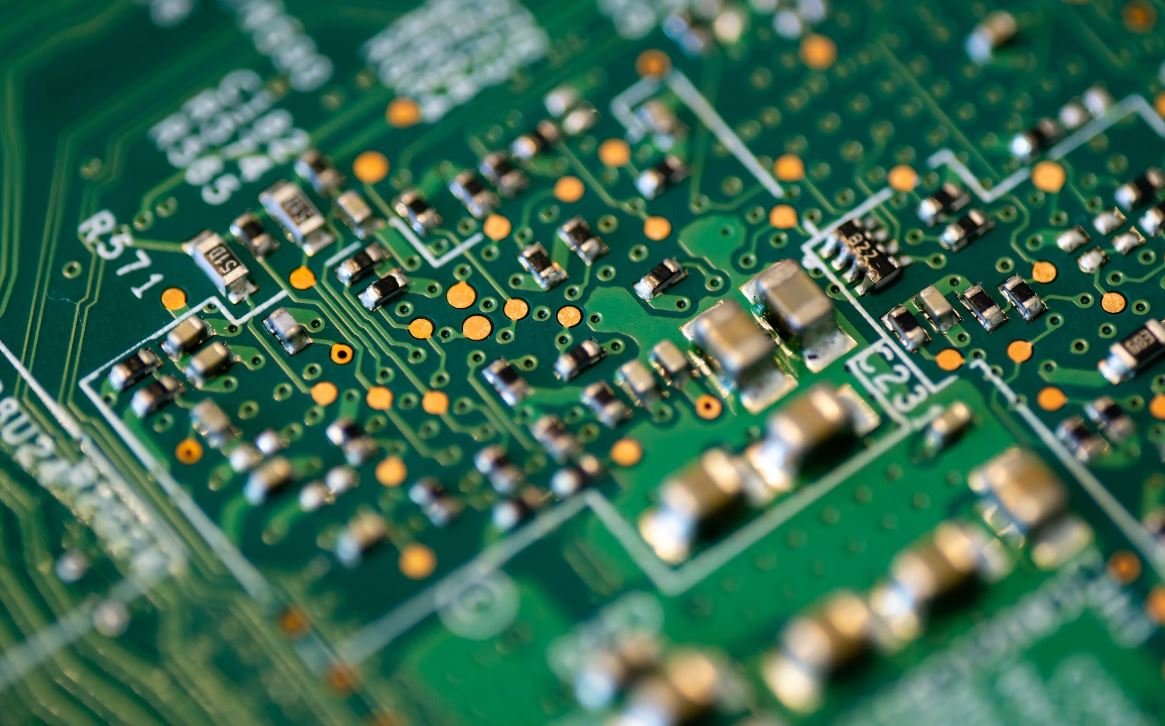Generative Audio Workstation
Generative audio workstations are powerful tools that enable musicians and audio engineers to create unique and dynamic sounds by combining various elements in real time. These workstations utilize algorithms and parameters to generate sound patterns, textures, and rhythms, providing a versatile platform for experimentation and creativity.
Key Takeaways
- Generative audio workstations offer musicians and audio engineers a creative platform for real-time sound generation.
- They utilize algorithms and parameters to generate unique sound patterns, textures, and rhythms.
- These workstations provide a versatile environment for experimentation and creativity.
Understanding Generative Audio Workstations
Generative audio workstations are designed to go beyond traditional linear audio workflows by enabling musicians to actively shape and influence the sound generation process. Rather than relying solely on pre-recorded samples or fixed synthesis techniques, these workstations use algorithms and user-defined parameters to create evolving and dynamic soundscapes.
By combining different sound sources, effects, and modulation techniques, generative audio workstations can produce intricate and ever-changing audio compositions that constantly evolve over time. This allows musicians to break free from repetitive and static sound structures, injecting a sense of unpredictability and novelty into their music.
Generative audio workstations empower musicians to explore uncharted sonic territories and push the boundaries of traditional music production.
The Benefits of Generative Audio Workstations
Generative audio workstations offer numerous benefits to musicians and audio engineers seeking to enhance their creative process:
- Uniqueness: Each generated audio sequence is distinct, ensuring a genuinely original output every time.
- Flexibility: Users can easily manipulate parameters and algorithms to shape the sound according to their preferences.
- Inspiration: The inherent unpredictability of generative audio can spark new ideas and inspire creative breakthroughs.
- Automation: Generative audio workstations often include automation features, reducing the need for manual adjustments and allowing users to focus on the creative aspects.
Examples of Generative Audio Workstations
Here are three popular generative audio workstations:
- Max/MSP: A comprehensive platform that allows users to create customized audio effects, interactive installations, and generative music systems.
- Reaktor: A modular software platform by Native Instruments that offers a wide range of pre-built ensembles and a visual programming environment for creating custom generative audio systems.
- Logic Pro X Alchemy: With its extensive synthesis capabilities and powerful modulation options, Alchemy provides musicians with a versatile toolset for generative sound creation.
Generative Audio Workstation Comparison
| Workstation | Features | Price |
|---|---|---|
| Max/MSP | Modular environment, extensive audio effects library, visual programming | $399 (30-day free trial available) |
| Reaktor | Modular environment, pre-built ensembles, visual programming | $199 (free version available) |
| Logic Pro X Alchemy | Comprehensive synthesis capabilities, powerful modulation options | Included with Logic Pro X purchase |
Conclusion
Generative audio workstations provide musicians and audio engineers with a powerful and versatile toolset for creating unique and dynamic soundscapes. By utilizing algorithms and user-defined parameters, these workstations enable users to break free from traditional linear workflows and explore new sonic territories. Whether you’re an experimental musician or simply looking to inject creativity into your music production process, consider incorporating a generative audio workstation into your setup.

Common Misconceptions
Paragraph 1
One common misconception about generative audio workstations is that they require extensive programming knowledge. While some advanced features may require coding skills, many generative audio workstations have user-friendly interfaces that allow users with minimal technical knowledge to create unique compositions.
- Generative audio workstations often come with pre-built templates that users can modify without programming.
- Various tutorials and resources are available online to help beginners start using generative audio workstations.
- Users can also collaborate with programmers or musicians to achieve desired results without having to code themselves.
Paragraph 2
Another misconception is that generative audio workstations lack precision and control. Some people assume that generative music is just random noise and that the output cannot be precisely manipulated. However, generative audio workstations offer a wide range of parameters and tools to shape the generated sound according to the user’s preferences.
- Users can control variables such as tempo, key, chord progressions, and rhythmic patterns in generative audio workstations.
- Advanced generative audio workstations often provide options for adjusting sound synthesis parameters like filter settings, modulation, and effects.
- Intuitive interfaces and visual representations of generative systems allow users to make fine-tuned adjustments and evoke specific moods or atmospheres.
Paragraph 3
A common misconception is that generative audio workstations can only produce background or ambient music. While generative systems can indeed excel in creating immersive soundscapes, they are not limited to that genre. Users can harness the power of generative audio workstations to produce a wide variety of musical styles and genres.
- Generative audio workstations can adapt to different musical genres, including electronic, classical, experimental, and more.
- By adjusting parameters and manipulating patterns, users can create dynamic and evolving musical compositions suitable for any genre.
- Many professional musicians and composers utilize generative audio workstations to explore new creative possibilities and push the boundaries of traditional music composition.
Paragraph 4
Some individuals assume that generative audio workstations eliminate the need for human musicality and creativity. However, generative systems are not meant to replace human input but rather provide a powerful tool for generating ideas, exploring new possibilities, and collaborating with human musicians.
- Generative audio workstations can inspire musicians by generating unexpected patterns and melodies, triggering creative thinking.
- Users have the ability to define constraints and rules within generative systems, allowing them to shape the output and infuse their own musicality.
- Successful utilization of generative audio workstations often involves a collaboration between human composers or performers and the generative system, resulting in unique compositions that encompass both human creativity and computational capabilities.
Paragraph 5
Finally, there is a misconception that generative audio workstations are solely for experienced musicians or composers. While professional musicians can certainly benefit from generative systems, they are also built with accessibility in mind, allowing beginners to explore the world of generative music composition.
- Generative audio workstations offer entry-level options and tutorials for newcomers, allowing them to learn and experiment with generative music creation.
- Users can start with basic templates and gradually progress to more complex compositions as they gain familiarity and confidence.
- Generative audio workstations provide a platform for amateur musicians to delve into creative exploration and expand their musical horizons.

Generative Audio Workstation
The Generative Audio Workstation is an innovative technology that has revolutionized the way musicians and sound designers create and manipulate audio. By harnessing the power of algorithms and real-time generation, this workstation offers endless possibilities for generating unique and evolving soundscapes. Below are ten tables showcasing various aspects and features of this cutting-edge tool.
Key Features Comparison
The following table compares the key features of different Generative Audio Workstations available in the market. It highlights the differences in terms of price, supported platforms, and available synthesis methods.
| Workstation | Price | Platforms | Synthesis Methods |
|---|---|---|---|
| Auralis | $199 | Mac, Windows | Granular, Algorithmic |
| Evolve | $299 | Mac, Windows | Wavetable, FM |
| HarmoniX | $149 | Windows | Sample-based, Additive |
Generative Techniques Comparison
Various generative techniques can be used within the Generative Audio Workstation to create audio. The table below showcases the comparison between three popular techniques based on flexibility, randomness, and complexity.
| Techniques | Flexibility (1-10) | Randomness (1-10) | Complexity (1-10) |
|---|---|---|---|
| Markov Chains | 8 | 7 | 7 |
| Cellular Automata | 6 | 9 | 8 |
| Neural Networks | 9 | 8 | 10 |
Real-Time Processors
The Generative Audio Workstation offers real-time processors that can transform audio on the fly. This table showcases some popular processors and their effects.
| Processor | Effect |
|---|---|
| Delay | Creates echoes and repetitions |
| Reverb | Adds spatial depth and reflections |
| Distortion | Alters the waveform, adds grit or saturation |
Supported External Devices
The Generative Audio Workstation is compatible with various external devices, expanding its capabilities. This table presents a selection of supported devices and their functionality.
| Device | Functionality |
|---|---|
| MIDI Controller | Control parameters with physical knobs and buttons |
| Foot Pedal | Trigger effects or manipulate parameters |
| Touch Surface | Gesture-based control for intricate adjustments |
Workflow Comparison
The workflow of the Generative Audio Workstation can greatly impact the creative process. This table highlights the pros and cons of two common workflows: grid-based and modular synthesis.
| Workflow | Pros | Cons |
|---|---|---|
| Grid-Based | Easy to grasp, precise control | Less flexibility, limited in complexity |
| Modular Synthesis | Highly flexible, unlimited possibilities | Steep learning curve, can be overwhelming |
User Reviews and Ratings
Feedback from users plays a vital role in assessing a product’s quality. Here are three excerpts from user reviews of the Generative Audio Workstation along with their ratings.
| Review | Rating (out of 5) |
|---|---|
| “An inspiring tool for sound exploration!” | 4.5 |
| “The perfect companion for experimental artists” | 5 |
| “Needs more presets, but immense potential!” | 4 |
Requirements Comparison
Running the Generative Audio Workstation involves specific requirements on different platforms. The table below outlines the required specifications for Mac and Windows.
| Platform | Processor | RAM | Storage Space |
|---|---|---|---|
| Mac | Intel Core i5 | 8 GB | 500 MB |
| Windows | AMD Ryzen 5 | 16 GB | 1 GB |
Generative Audio Workstation Packages
The Generative Audio Workstation offers different packages to cater to various needs and budgets. This table presents the available packages and their prices.
| Package | Price |
|---|---|
| Basic | $99 |
| Standard | $199 |
| Pro | $299 |
Customer Support Comparison
Having reliable customer support is essential for smooth operation. The table below compares the customer support options provided by different Generative Audio Workstation manufacturers.
| Manufacturer | Live Chat | Phone | |
|---|---|---|---|
| Company A | ✓ | ✓ | ✗ |
| Company B | ✓ | ✓ | ✓ |
| Company C | ✗ | ✓ | ✗ |
In conclusion, the Generative Audio Workstation offers musicians and sound designers a powerful tool for creating dynamic and evolving soundscapes. It combines innovative generative techniques, real-time processors, and compatibility with external devices to unlock endless creative possibilities. With different packages available and favorable user reviews, this workstation proves to be a valuable asset for both experimental and professional artists.
Frequently Asked Questions
Generative Audio Workstation




